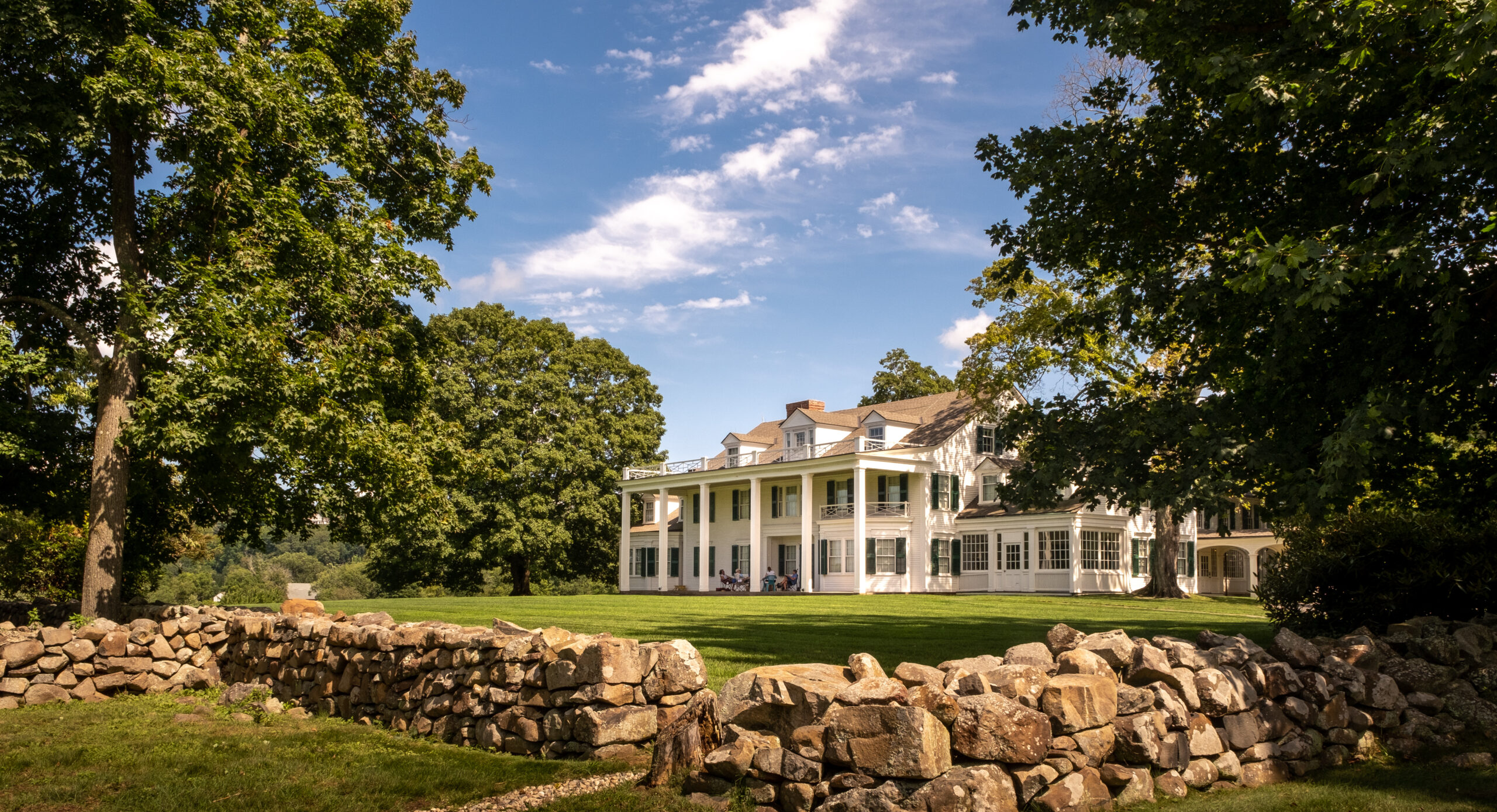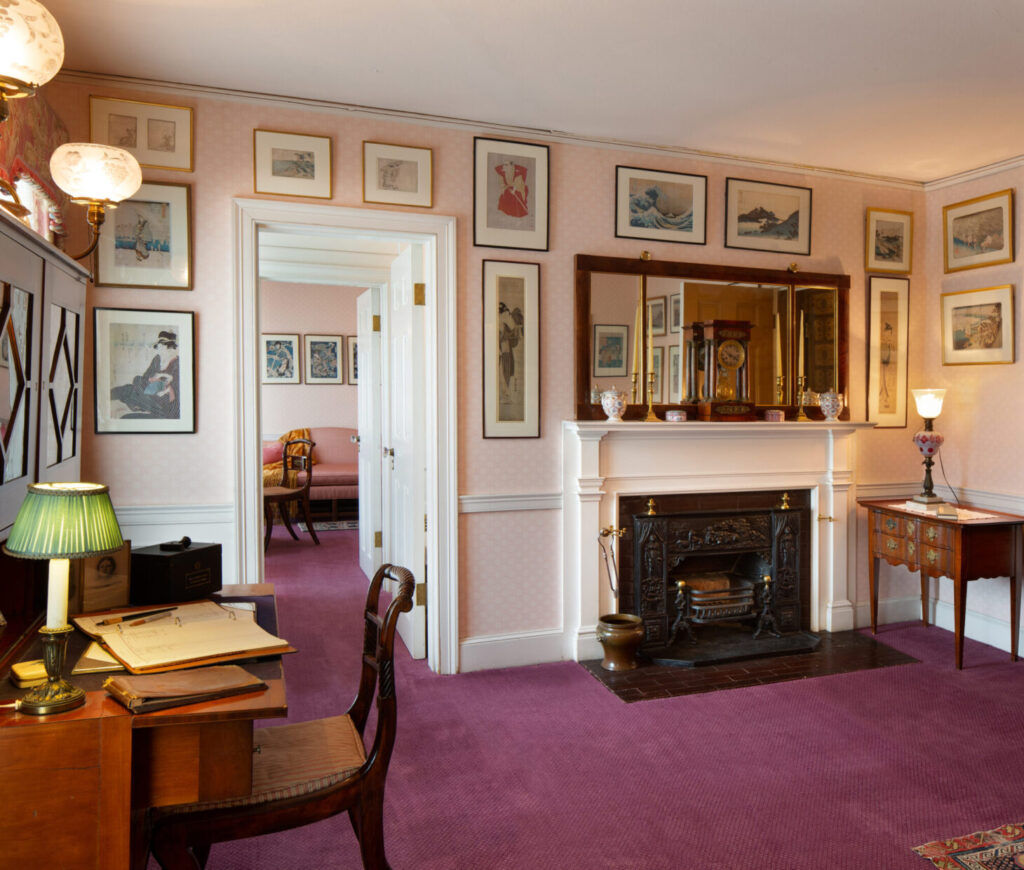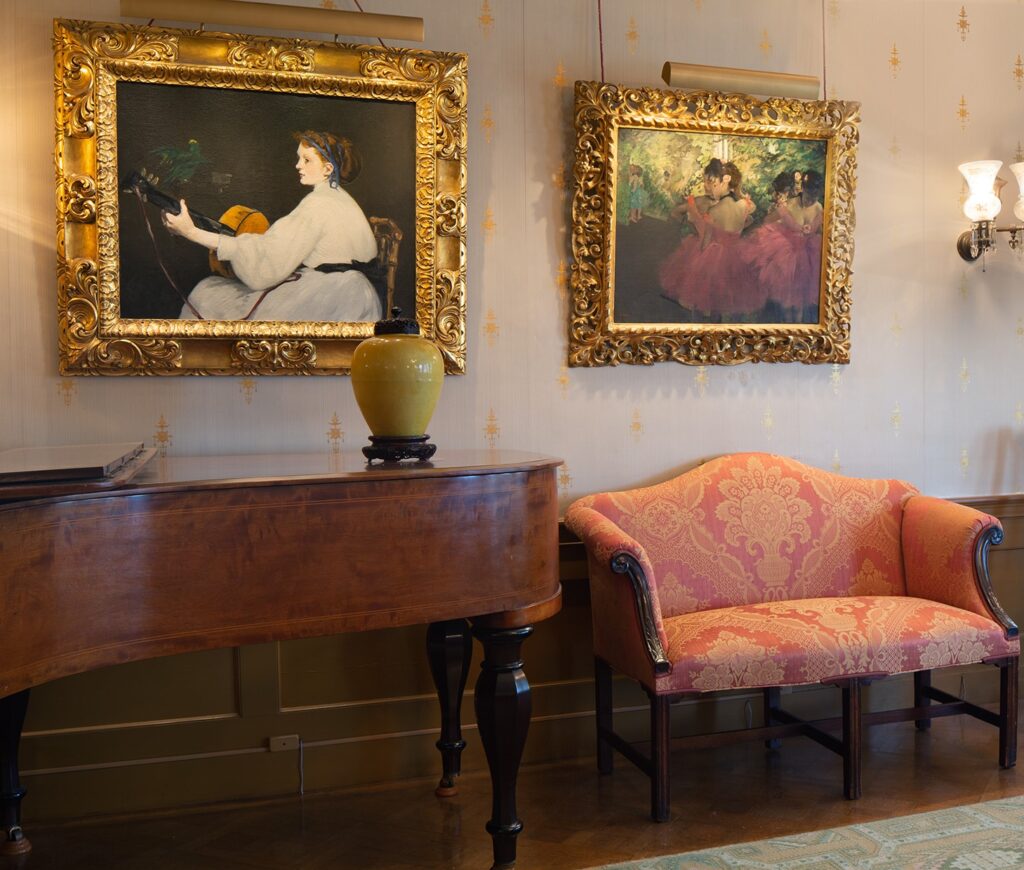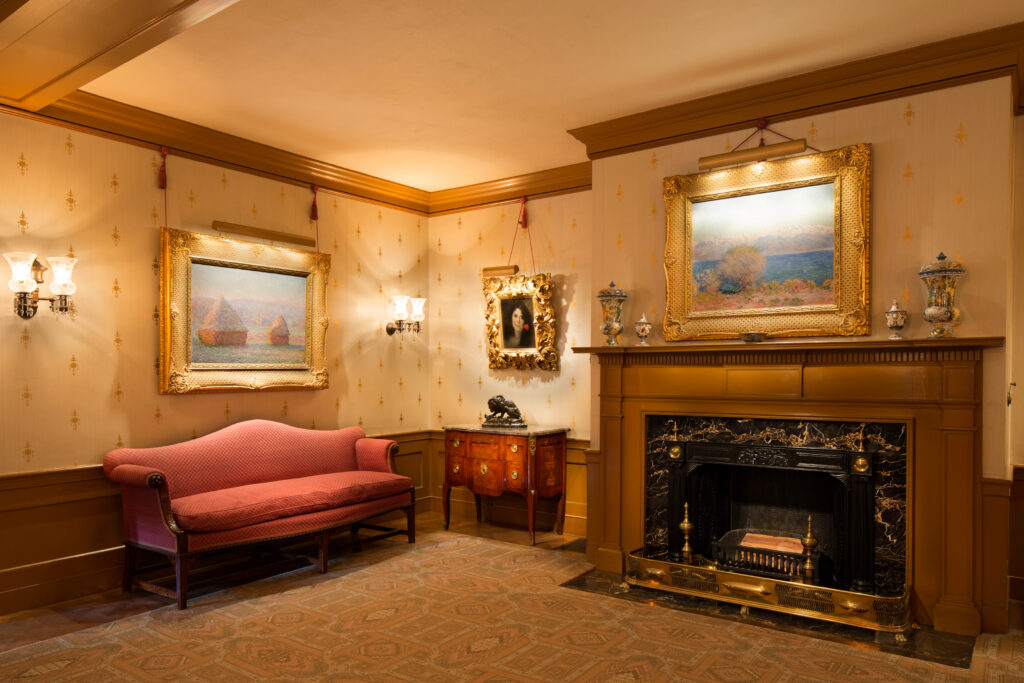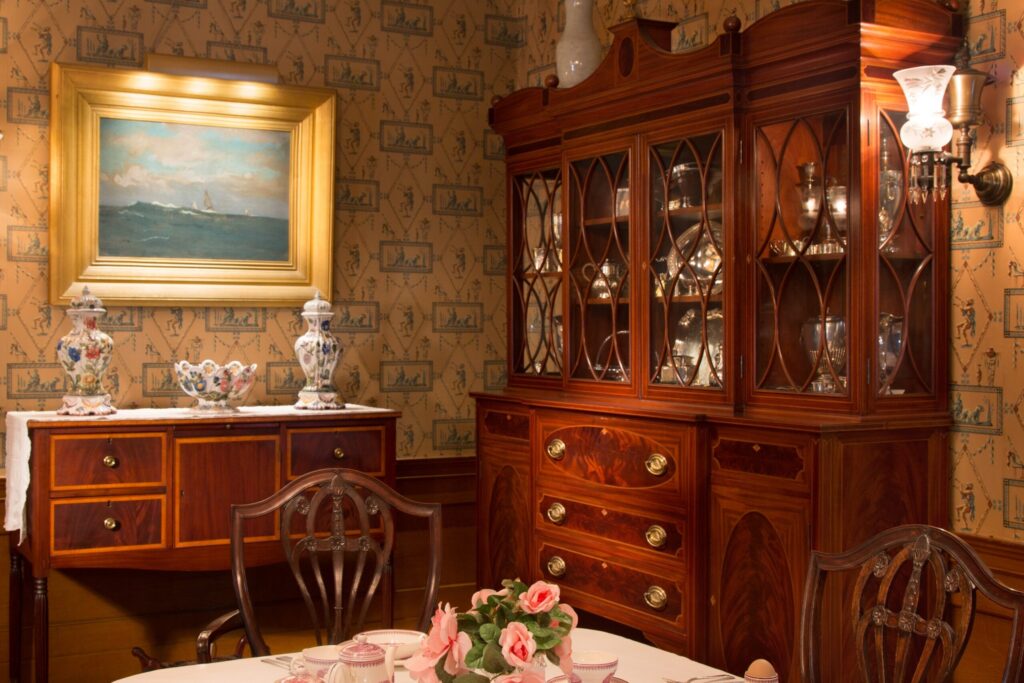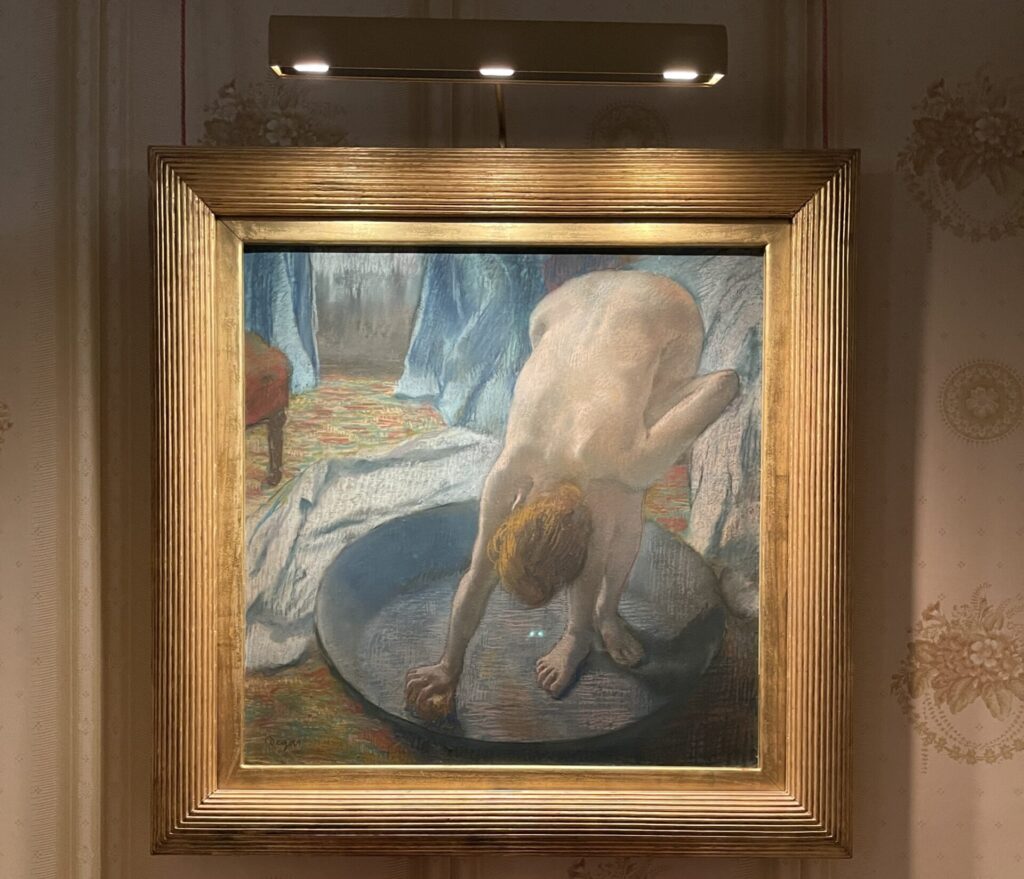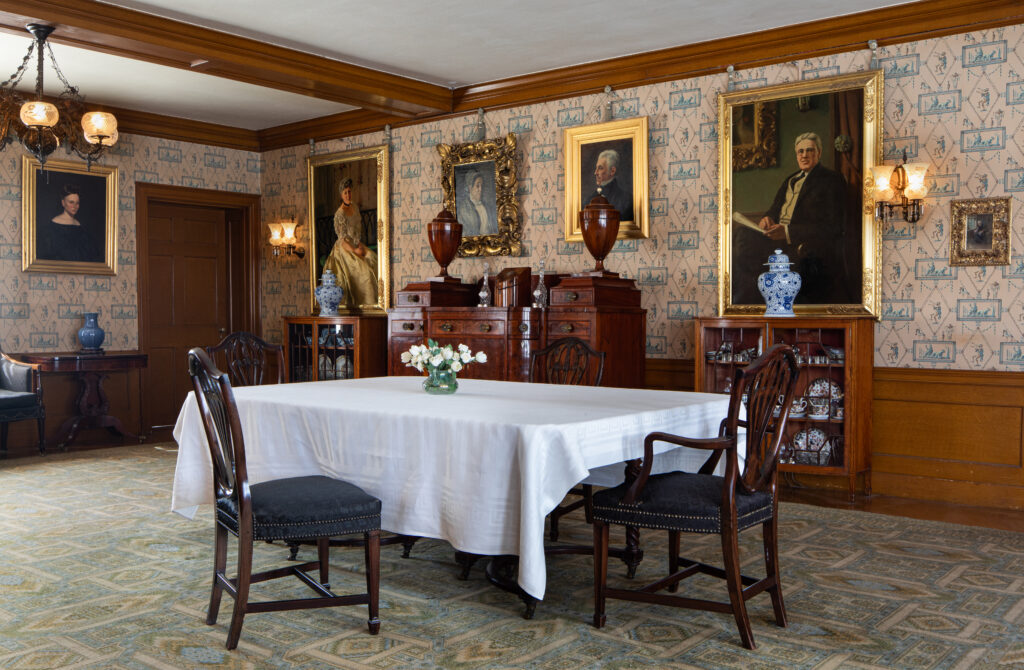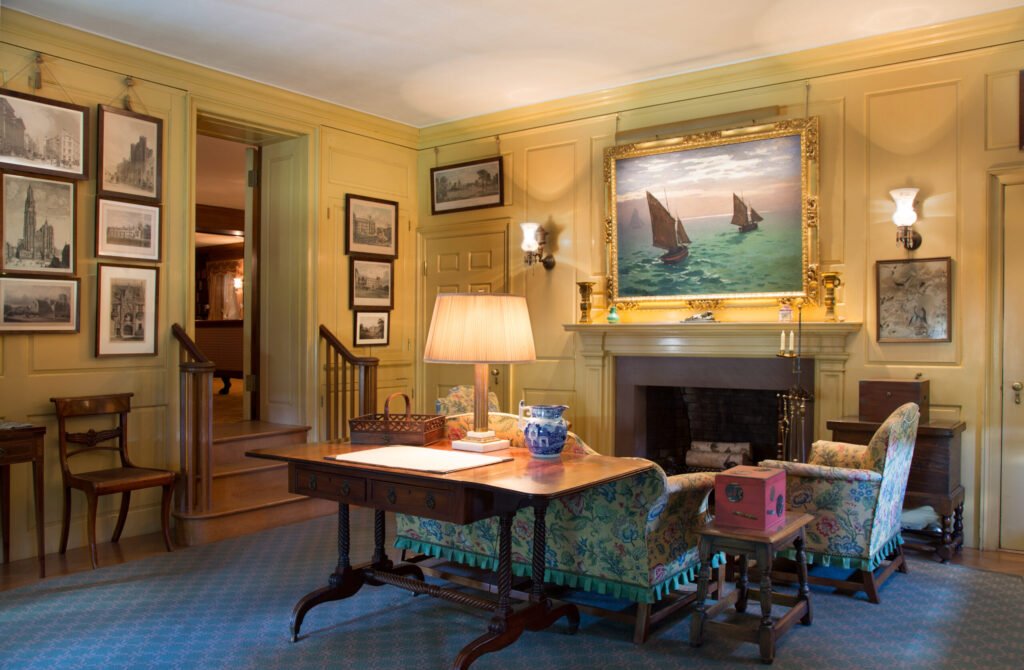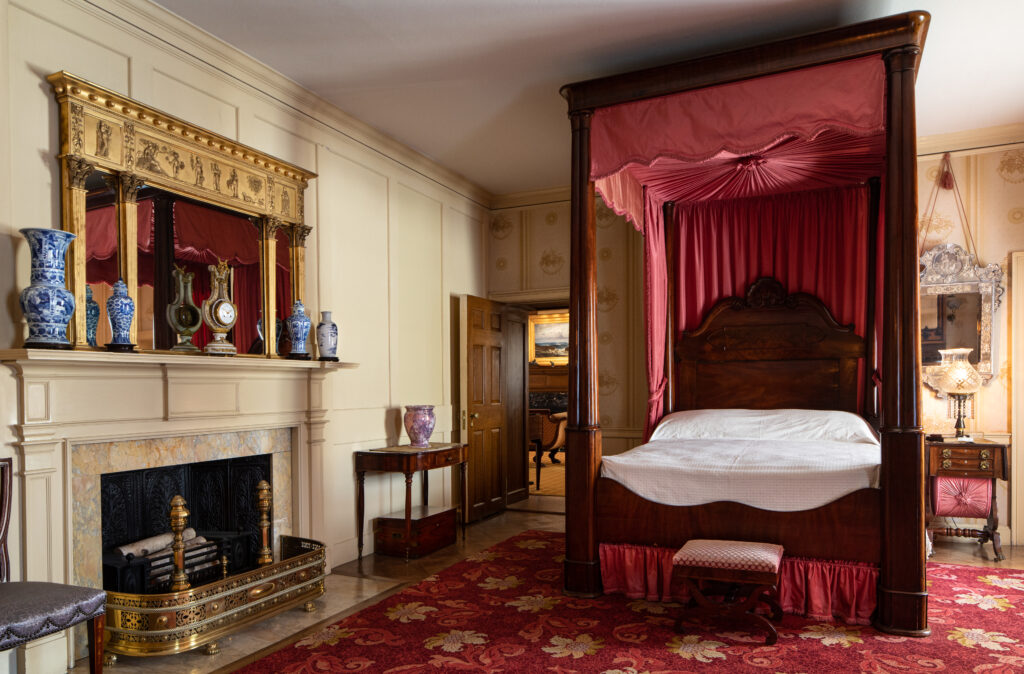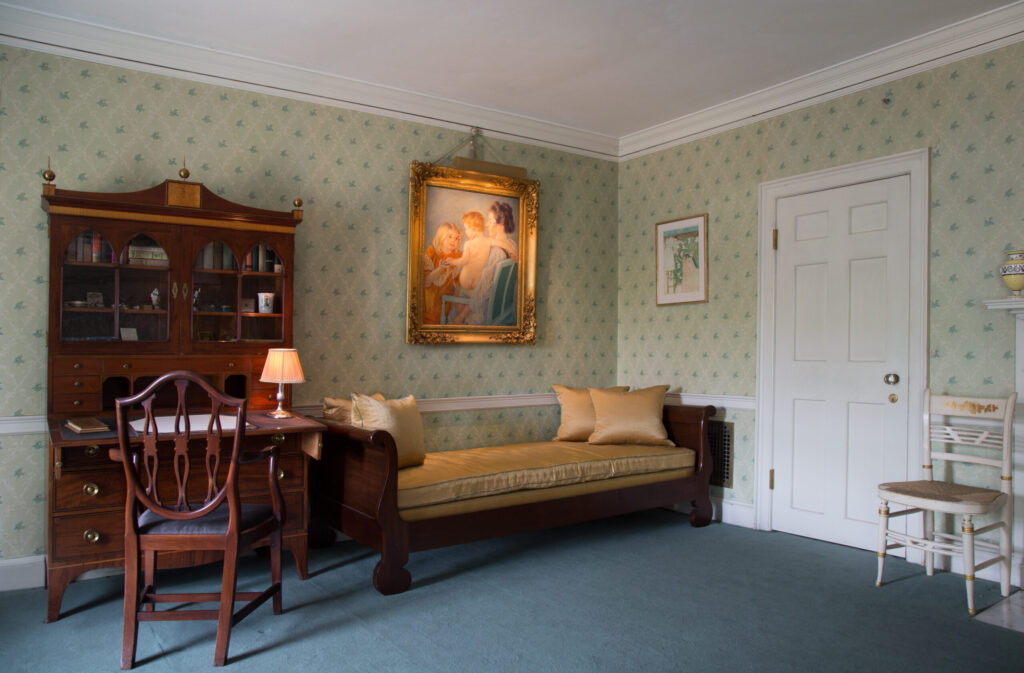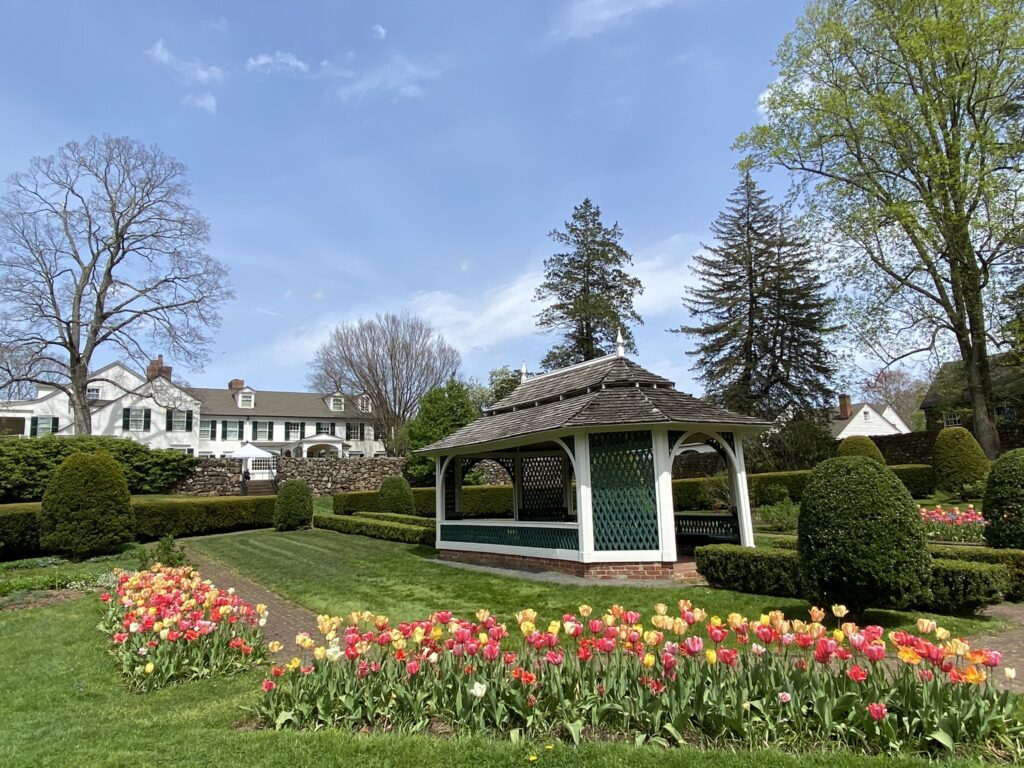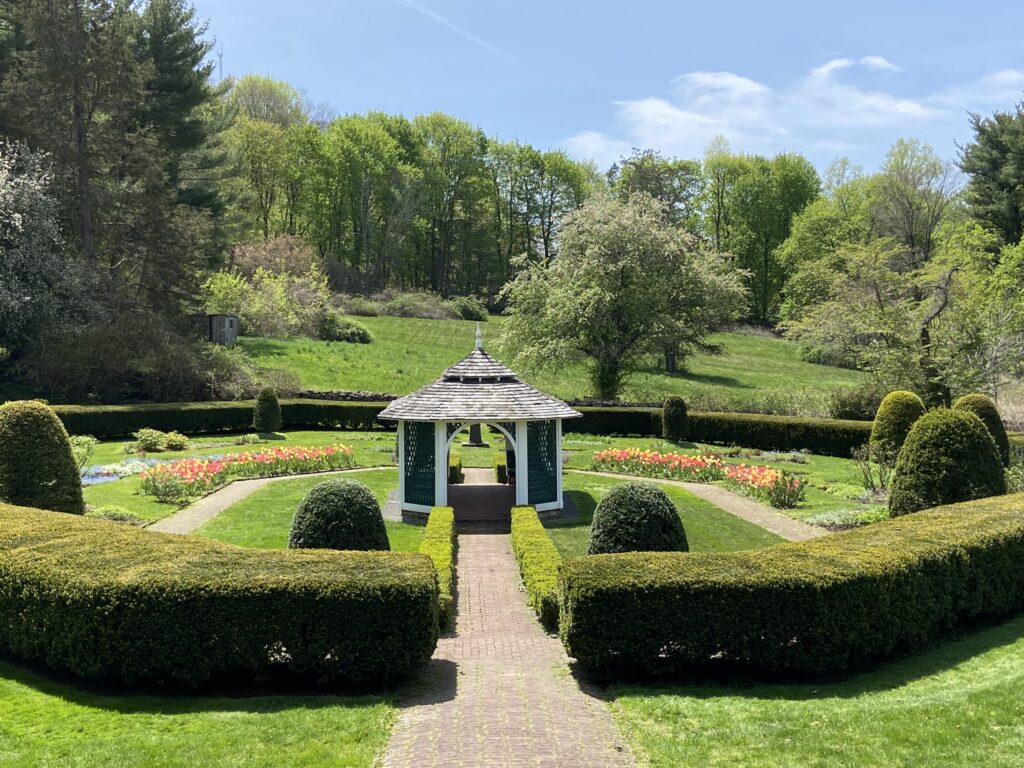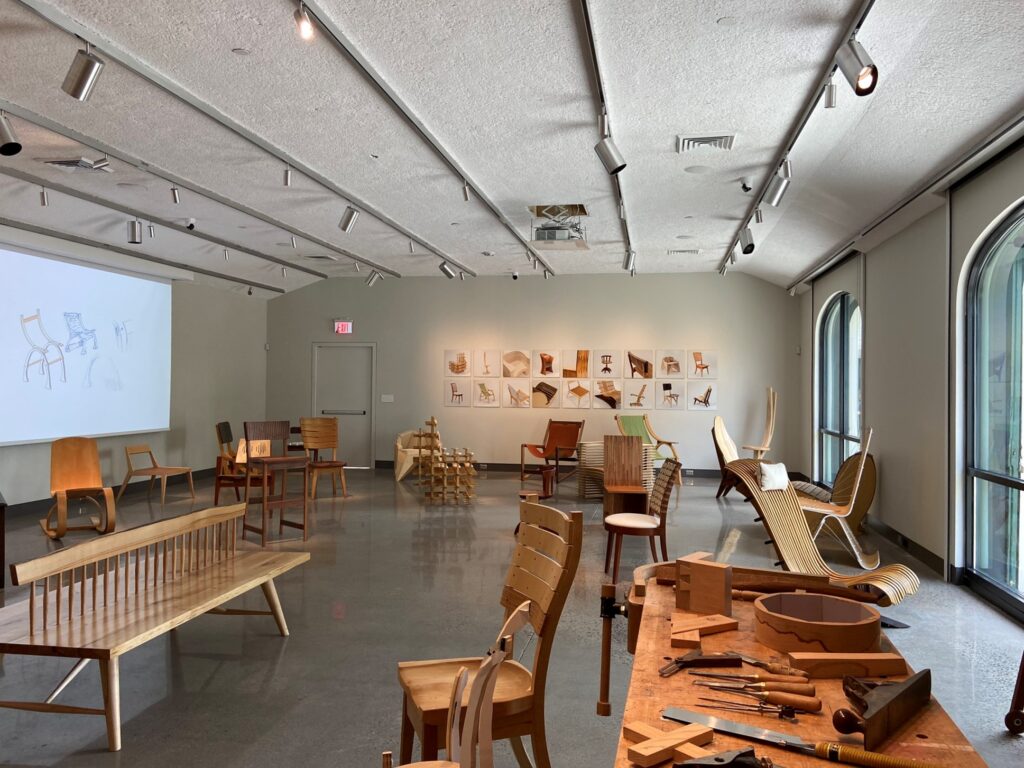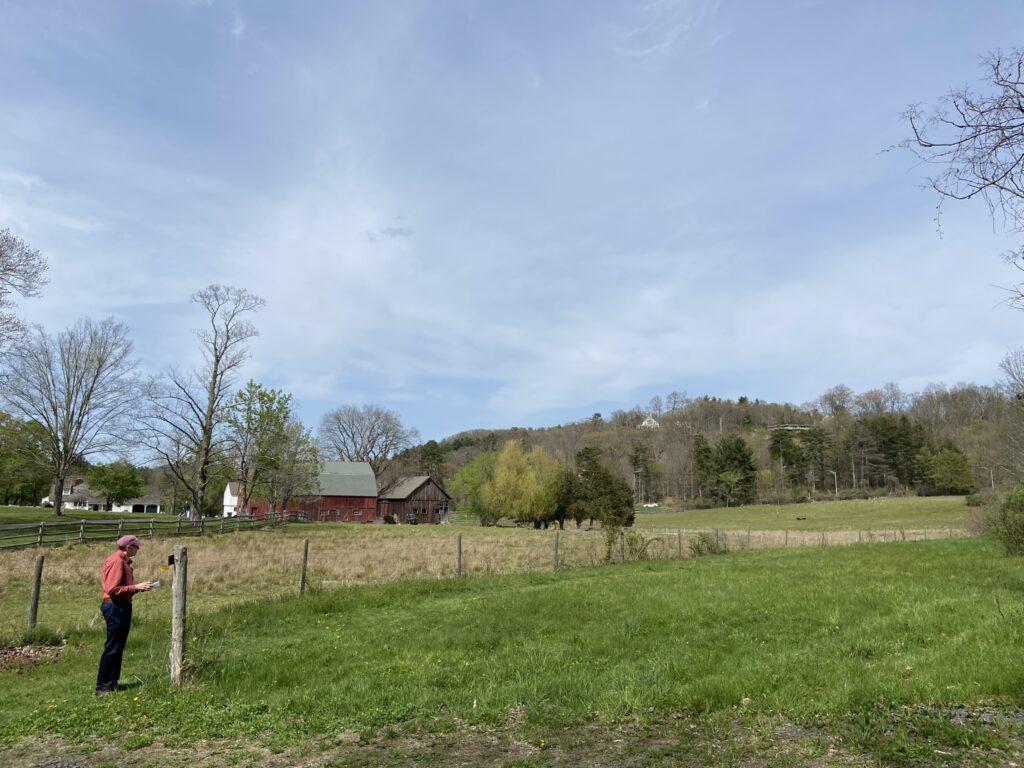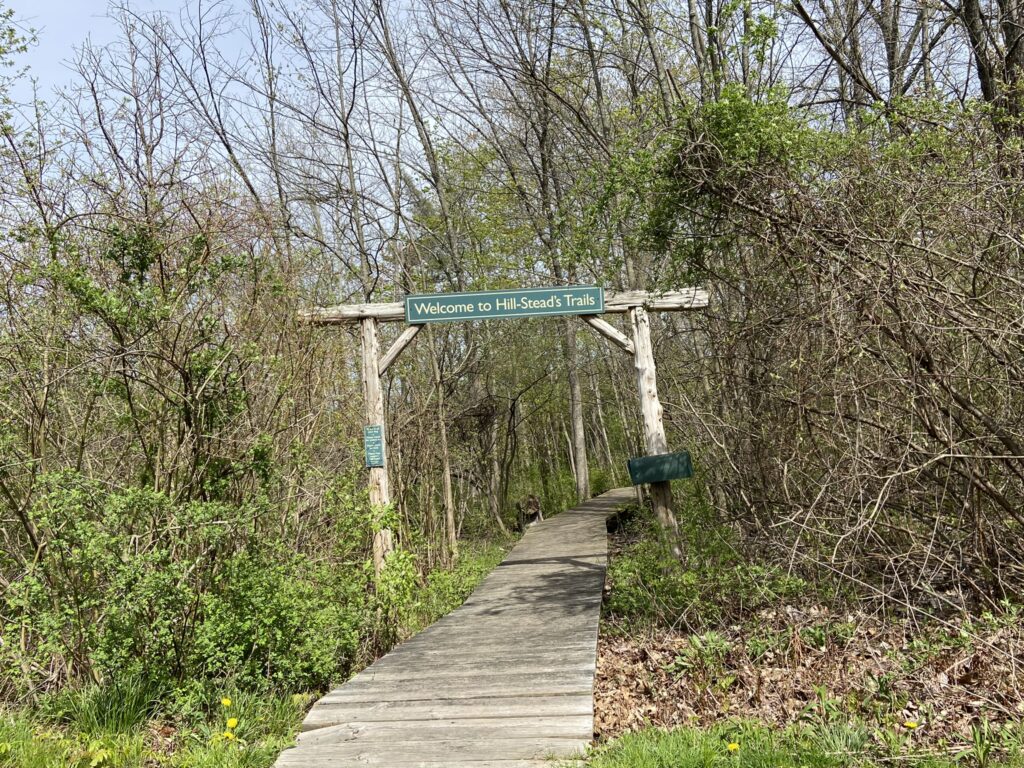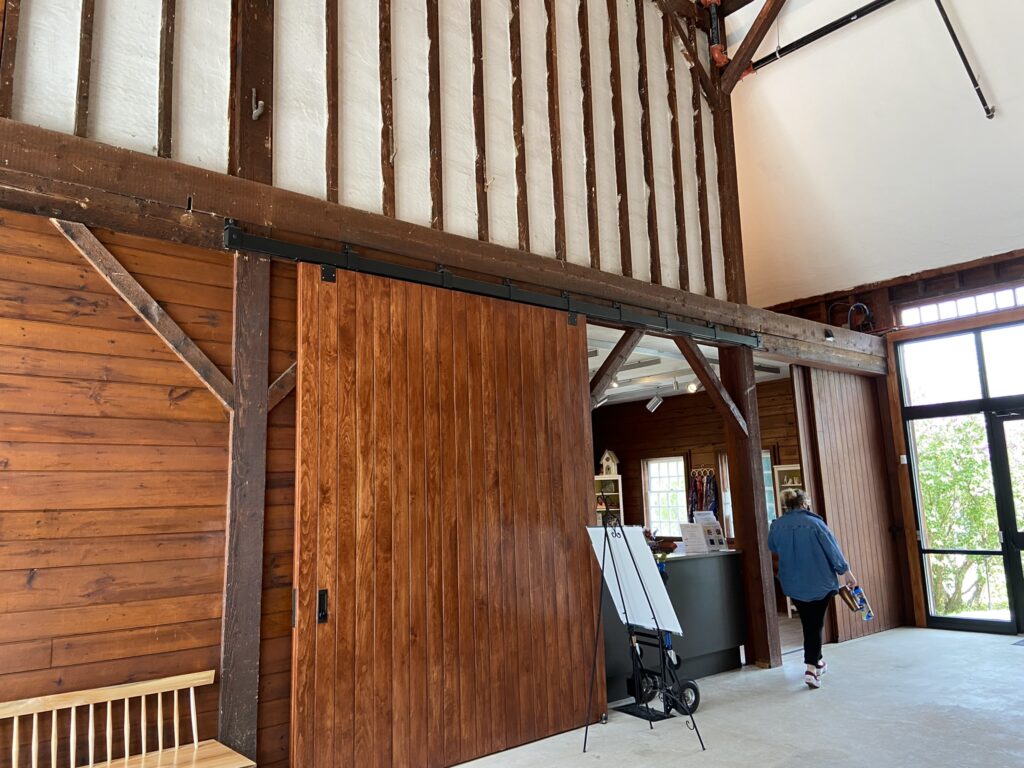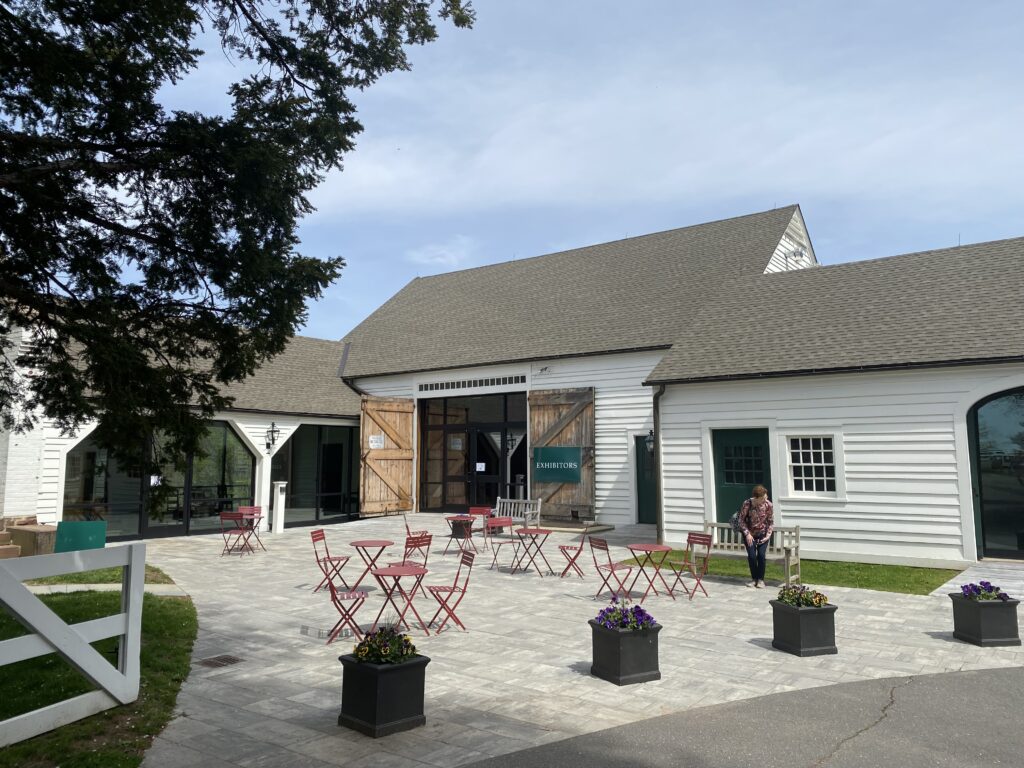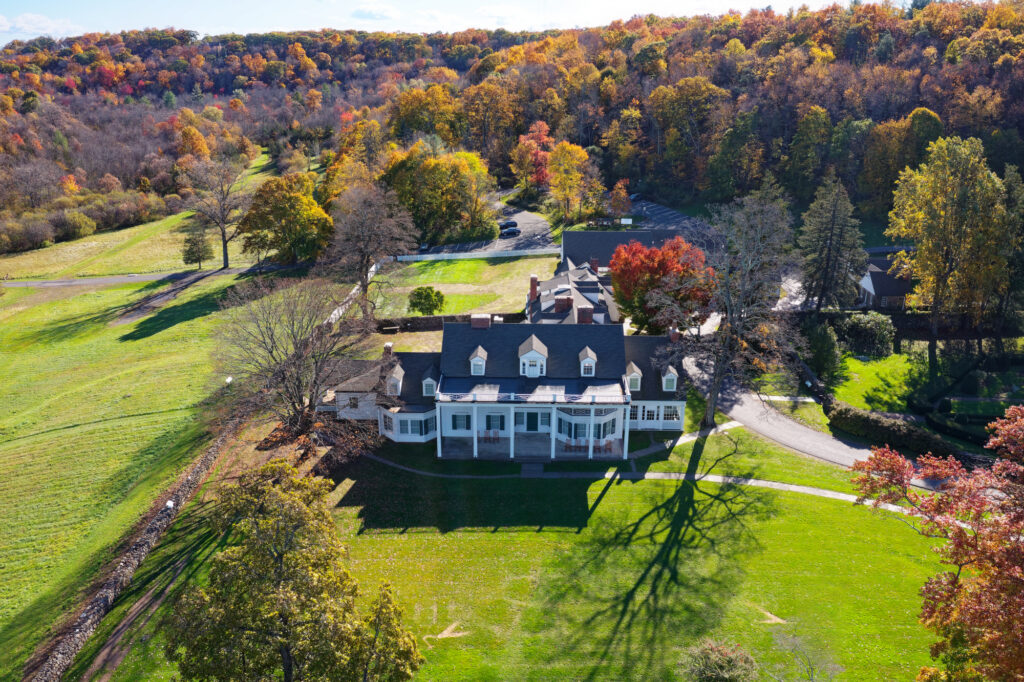A surprising Connecticut gem, Hill-Stead Museum presents superb Impressionist works by Monet, Degas, Manet, and others in a well-preserved Colonial Revival house designed by pioneering female architect Theodate Pope Riddle for her parents in the late 19th century. There’s even more to experience at Hill-Stead: its beautiful 152 acres, a National Historic Landmark, include the Sunken Garden, planned by Beatrix Farrand; a historic farm complex; and hiking trails through the natural landscape. The museum, part of the Connecticut Art Trail, is in the affluent suburb of Farmington, 10 miles west of Hartford.
The arts, including a poetry festival, have long been part of the museum’s mission. Hill-Stead is celebrating its 75th anniversary as a museum in 2022 with fresh energy, focusing on initiatives to attract new audiences. Among these are the multicultural “From the Porch” alfresco arts programming, as well as exhibits in the state-of-the-art spaces of the renovated Carriage Barn. RADICAL SPIRITS: Tarot, Automatism, and Feminist Histories, an exhibition of work from the feminist art collective Hilma’s Ghost (named for Swedish mystic and artist Hilma af Klint) will be on view June 24 to November 1. The artists’ explorations of tarot and automatism are linked to Hill-Stead’s history because Theodate Pope Riddle had a lifelong interest in the spiritual world; she attended séances and funded psychical research.
Theodate Pope Riddle and the Creation of Hill-Stead
The Hill-Stead story links the lives of architect Theodate Pope Riddle (1867–1946) and her parents, Ada Brooks Pope (1844–1920) and self-made Cleveland industrialist Alfred Pope (1842–1913). After Theodate died, her will provided for the opening of Hill-Stead, her first architectural project, as a museum “for the benefit and enjoyment of the public.” Today, 50,000 people visit annually.
The Popes maintained homes in Cleveland and New York City and sent their only child, Theodate, to the prestigious Miss Porter’s School in Farmington in 1886. Theodate fell in love with the town’s New England architecture and landscape, and her parents supported her decision to purchase and restore an 18th-century saltbox-style house. This ignited her interest in a career in architecture, quite unusual for a woman (let alone a wealthy one) at that time. Theodate was also captivated by the ongoing Colonial Revival movement, which encouraged the preservation and re-creation—more romantically than scientifically—of Colonial buildings.
Alfred Pope had a passion too: during a Grand Tour of Europe with Ada and Theodate in 1888–1889, the self-taught art lover began to collect French Impressionist paintings, putting him in the forefront of American art collectors, who generally preferred Old Masters. When Alfred decided to build a country estate for his retirement, Theodate convinced him to purchase land on a hill in Farmington, and, remarkably, she became the architect, with her father’s encouragement. Theodate wrote McKim, Mead & White, the famous architectural firm, asking for assistance with technical drawings but noting that it was “a Pope house, instead of McKim, Mead & White.” Working with a junior architect assigned to the project, Theodate gained an on-the-job education during the construction of the 33,000-square-foot house. Hill-Stead, completed in 1901, resembled a supersized Colonial clapboard house (with a Mount Vernon–style verandah added later) but also had modern amenities such as bathrooms and gas lighting.
The rest of Theodate’s life was busy and productive. She opened a professional architecture practice in 1905 and was licensed as an architect in New York State (1916) and Connecticut (1933). In 1918, she was admitted to the American Institute of Architects, the fifth woman to achieve this. Among her major projects, she designed Connecticut’s Westover School and founded and designed Avon Old Farms School, reflecting her lifelong interest in education; she also oversaw the reconstruction of the Theodore Roosevelt Birthplace in New York City. Theodate also took in a number of orphaned boys to raise before and after her marriage in 1916, at age 49, to diplomat John Wallace Riddle. The couple traveled extensively, but Hill-Stead was their home.
Exploring the Museum and Beyond
To see Hill-Stead Museum, visitors take a guided tour that encompasses the history of the family and house, Theodate Pope Riddle’s career, and the paintings and decorative art collections, which include more than 2,800 objects. Theodate’s will stipulated that nothing could be sold, moved, or lent, so Hill-Stead remains intact, from its period wallpaper and original furniture to the elegant displays of porcelain and prints. In one way, this is restricting, but it does preserve the style of an early 20th-century “Country Place” estate in a way that few surviving houses can.
The spacious rooms on the first floor flow into one other, providing an open feeling that worked well for entertaining. The dining room holds family portraits as well as the pastel Jockeys by Degas, which fits perfectly over a mantel. The drawing room displays two treasures: View of Cap d’Antibes, an 1888 work by Monet that was Alfred Pope’s first Impressionist acquisition, and Monet’s Grainstacks, White Frost Effect (1889). Other treasures in the drawing room areas are Manet’s 1866 The Guitar Player and an 1876 oil painting by Degas, Dancers in Pink. From the morning room, Alfred Pope could access his own six-hole golf course; the room holds Monet’s Fishing Boats at Sea (1868) and architectural drawings. Alfred Pope was good friends with Whistler, whose oil painting Symphony in Violet and Blue (1893) is one of 20 of the artist’s works in the collection. Not to be missed is The Tub, a superb pastel by Degas that shows a woman bathing; Pulitzer Prize–winning critic Sebastian Smee recently discussed it as part of his “Great Works, In Focus” series in The Washington Post.
Hill-Stead’s bedrooms offer an intimate look at family life, though the art, prints, and decorative objects here are impressive too. One sitting area displays Japanese prints by noted artists such as Hiroshige, Hokusai, and Utamaro (these are copies; due to their fragility, the real ones are in storage). A bedroom is a fitting setting for Mary Cassatt’s charming 1901 oil painting, Sara Handing a Toy to the Baby.
Any visit to Hill-Stead’s 152 acres should allow time to explore the gardens and grounds; these are open free to the public and have longer hours than the house itself. The one-acre Sunken Garden, with a summer house and seasonal plantings, occupies a natural depression near the house. Noted landscape architect Beatrix Farrand created a planting plan for the garden around 1920. The grounds include the historic farm buildings that were part of an experimental farm managed by her father and Theodate. Today a nearby farm raises sheep and other animals on-site. Hill-Stead’s three acres of trails traverse ponds, meadows, and forests, perfect for a relaxing walk.
Programming and Education
Hill-Stead has long offered public programming, and the opening of the renovated Carriage Barn in 2021 provides a much-anticipated opportunity to present special exhibitions and expanded educational sessions; check the website for information about exhibits and Hill-Stead’s 75th anniversary capital campaign, “Bringing Art to Life.” The new “From the Porch,” a multicultural alfresco performing arts series created during the pandemic, brings events from groups such as Speak Up (a storytelling group), Opera Connecticut, and the Pihcintu Multicultural Choir; Hill-Stead will also present a Juneteenth celebration, partnering with local Black cultural organizations.
Theodate Pope Riddle appreciated poetry, and Hill-Stead has supported poetry since 1992 with the nationally known Sunken Garden Poetry Festival, highlighting both well-known and emerging poets; this year’s festival will be in the fall. The festival has expanded to include the Fresh Voices Poetry Competition for Connecticut high school students and Theodate: An Online Poetry Journal.
Besides fun events like the May Market (with plants and home items) and a winter Holiday Market, Hill-Stead has educational opportunities for all ages, both online and in person, including school field trips. Families may find it easier to explore the museum on First Sundays, when tours are self-guided and kids can enjoy a scavenger hunt and listen to music on the museum’s piano. Nature walks are offered, too; a visit to Hill-Stead takes in both natural and artistic beauty.
Also in the Area
Other Connecticut Art Trail sites nearby are the Wadsworth Atheneum Museum of Art in Hartford and the New Britain Museum of American Art. The trail offers a money-saving pass.
Side Dish
Though no food is sold at Hill-Stead, visitors can stop by The Hartford Baking Co. in Farmington (or order ahead) and pick up a drink and a delicious sandwich for alfresco dining at the patio tables by the visitor center. The chicken salad sandwich comes on the bakery’s scratch-made ciabatta, and the California sandwich includes herb goat cheese, avocado, and house-pickled vegetables. It’s hard to resist adding a brownie or raspberry crumble bar. The Farmington outlet of Rebel Dog Coffee also has sandwiches and salads, besides an array of hot and cold coffee drinks, for takeout or dining in.
Linda Cabasin is a travel editor and writer who covered the globe at Fodor’s before taking up the freelance life. She’s a contributing editor at Fathom. Follow her on Instagram and Twitter at @lcabasin.
Top Photo: Hill-Stead’s columns echo those at Mount Vernon. (Photo courtesy Hill-Stead Museum.)

